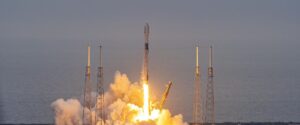
Next year, the U.S. Space Force's Space Systems Command (SSC) plans to buy military satellite communications (SATCOM) data from Luxembourg's Medium Earth Orbit Global Services (MGS) program, which has thus far deployed four O3b mPOWER satellites by Luxembourg-based SES S.A. "The United States is going to buy the SATCOM service from Luxembourg," Barbara Baker, SSC's deputy program executive officer for military communications and Positioning, Navigation and Timing (PNT), told a Space Force Association virtual audience on Sept. 21. "That's an…














